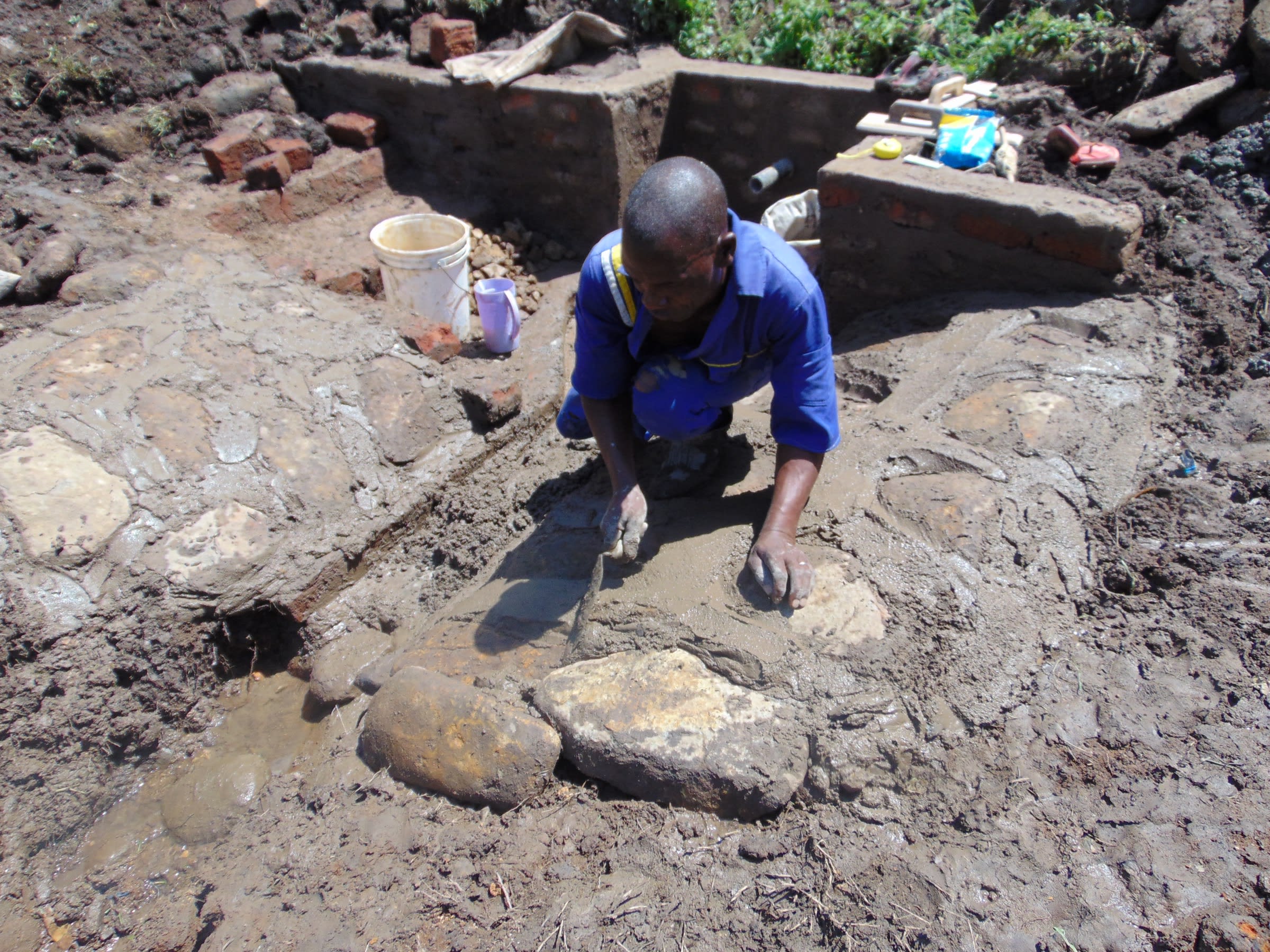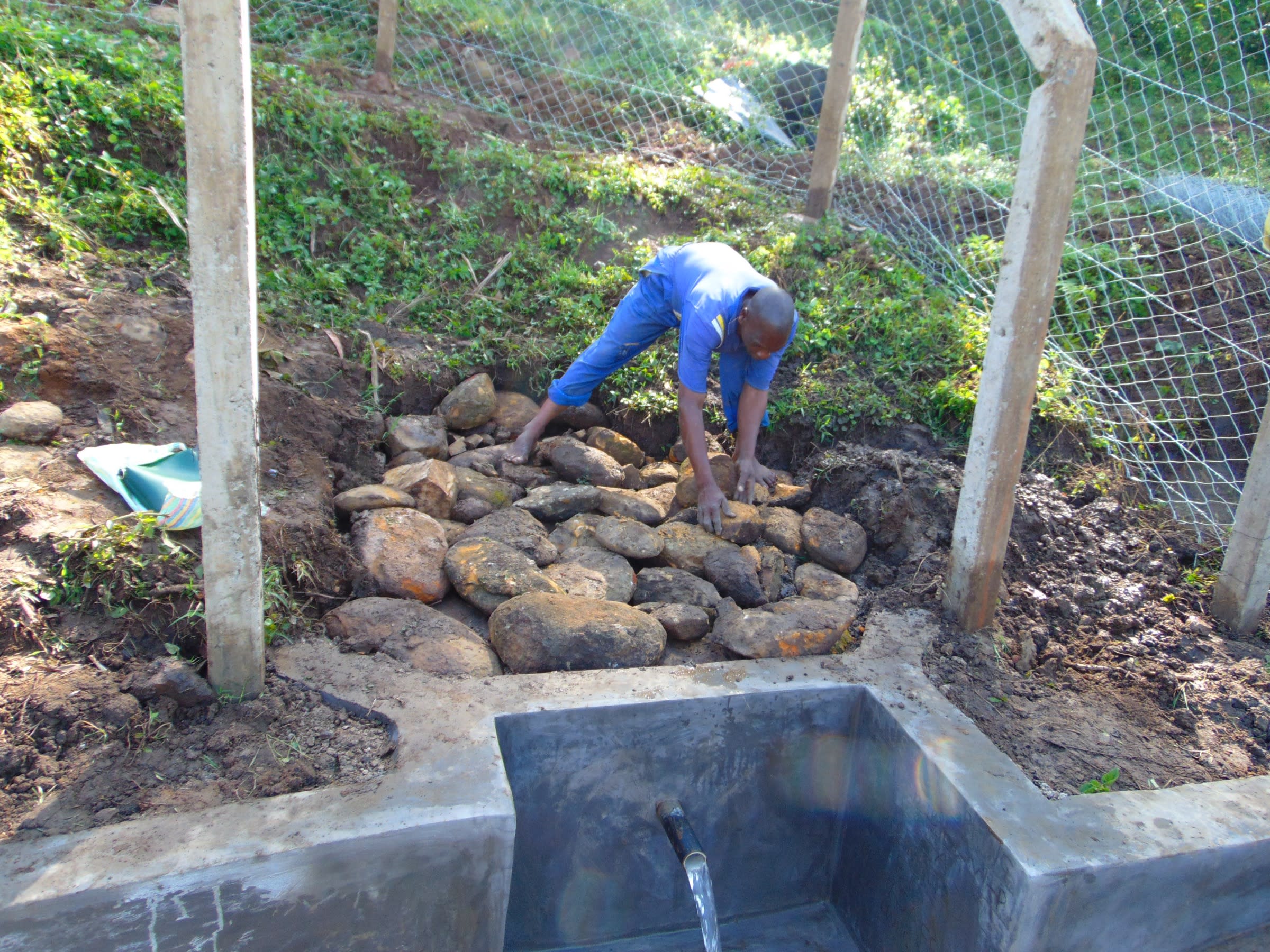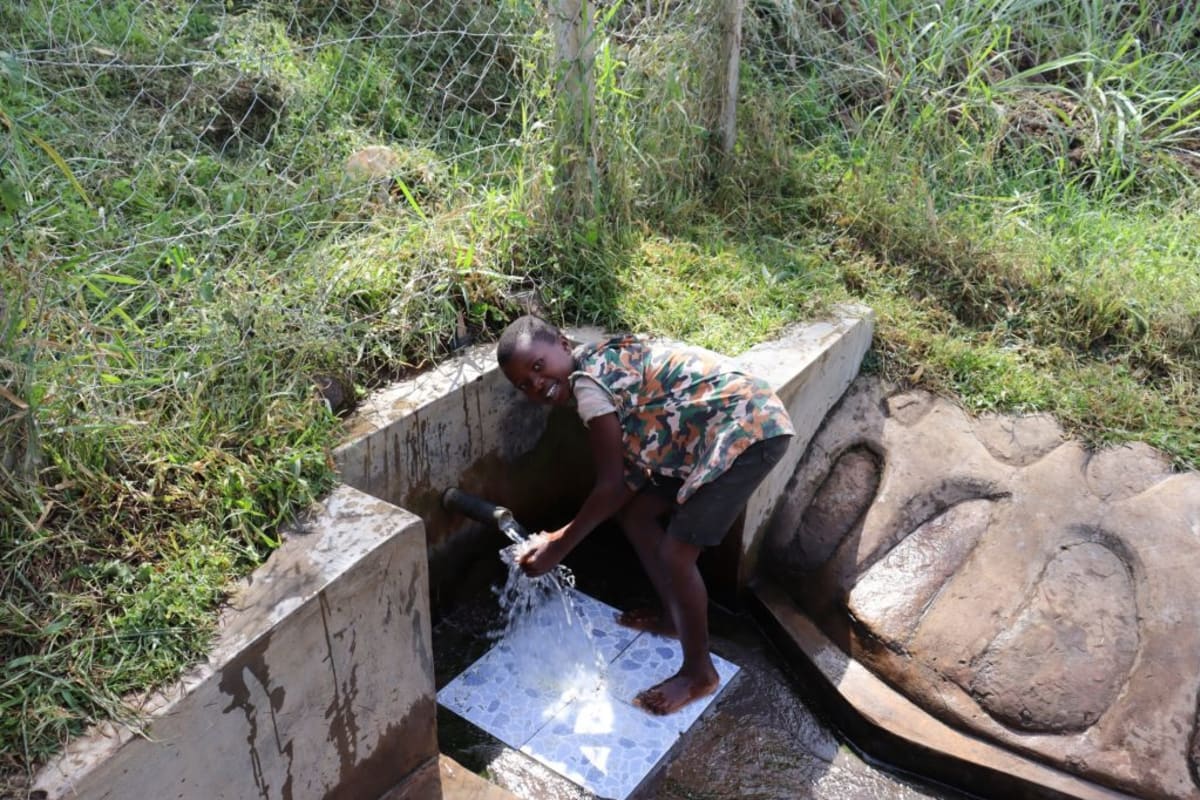Musava Springs is found in the Shikutse Community, where 175 people depend on this unprotected source for water. The area around the spring is a steep slope, surrounded by trees and rocks. Most community members fetch their water in the morning and late in the evening, typically leading to overcrowding. With the congestion comes long wait times and frustration, often leading to disagreements and, sometimes, fights. The overcrowding also means people spend a lot of their time - time which could otherwise be used for other, more productive activities - at the spring each day.
"I have to queue for very long periods of time to get my water, especially during the dry season. This, in turn, makes me waste a lot of time which could have been used somewhere else," explained Violet Nafula, a farmer in the community.
"I have to go on so many trips to the spring to be able to get enough water to be used for domestic activities. This makes me waste my time, which I would have used to catch up with my assignments and engage in other activities," said Daniel, a primary school student.
Another reason it takes so long at the spring is the difficult access point. Community members have to scoop the water from a small pool using jugs and bowls to pour the water into their larger jerrycans. The process is tiring and time-consuming, but if people move too quickly, they risk stirring up both mud in the water and someone else's frustration. Therefore, the tempo at the spring is focused, as fast as possible, yet never fast enough to be convenient.
The other major issue with the spring in its unprotected state is its highly contaminated water. Because it is open, it is always full of dirt and algae. When it rains, the runoff carries farm chemicals, animal waste, and more soil into the water. Animals can also access the spring, drinking directly from the pool of water where community members fetch it.
Drinking contaminated water leads directly to waterborne and water-related diseases. Community members report frequent diarrhea, typhoid, and amoeba cases, all of which are expensive to treat and rob adults and children alike of their health, energy, and productive time. For kids, it also means staying home sick from school.
What We Can Do:
Spring Protection
Protecting the spring will help provide access to cleaner and safer water and reduce the time people have to spend to fetch it. Construction will keep surface runoff and other contaminants out of the water. With the community’s high involvement in the process, there should be a good sense of responsibility and ownership for the new clean water source.
Fetching water is a task predominantly carried out by women and young girls. Therefore, protecting the spring and offering training and support will help empower the female members of the community by freeing up more of their time and energy to engage and invest in income-generating activities and their education.
Training on Health, Hygiene, COVID-19, and More
To hold training during the pandemic, we work closely with both community leaders and the local government to approve small groups to attend training. We ask community leaders to invite a select yet representative group of people to attend training which will then act as ambassadors to the rest of the community to share what they learn. We also communicate our expectations of physical distancing and wearing masks for all who choose to attend.
The training will focus on improved hygiene, health, and sanitation habits in this community. We will also have a dedicated session on COVID-19 symptoms, transmission routes, and prevention best practices.
With the community’s input, we will identify key leverage points to alter their practices at the personal, household, and community levels to affect change. This training will help ensure participants have the knowledge they need about healthy practices and their importance to make the most of their water points as soon as the water is flowing.
Our team of facilitators will use a variety of methods to train community members. Some of these methods include participatory hygiene and sanitation transformation, asset-based community development, group discussions, handouts, and demonstrations at the spring.
One of the most important issues we plan to cover is handling, storing, and treating water. Having a clean water source will be extremely helpful, but it is useless if water gets contaminated by the time it is consumed. The community and we strongly believe that all of these components will work together to improve living standards here, which will help to unlock the potential for these community members to live better, healthier lives.
We will then conduct a small series of follow-up training before transitioning to our regularly scheduled support visits throughout the year.
Training will result in the formation of a water user committee elected by their peers that will oversee the spring's operations and maintenance. The committee will enforce proper behavior around the spring and delegate tasks that will help preserve the site, such as building a fence and digging proper drainage channels. The fence will keep out destructive animals and unwanted waste, and the drainage will keep the area’s mosquito population at a minimum.

 Protected Spring
Protected Spring
 Rehabilitation Project
Rehabilitation Project







































